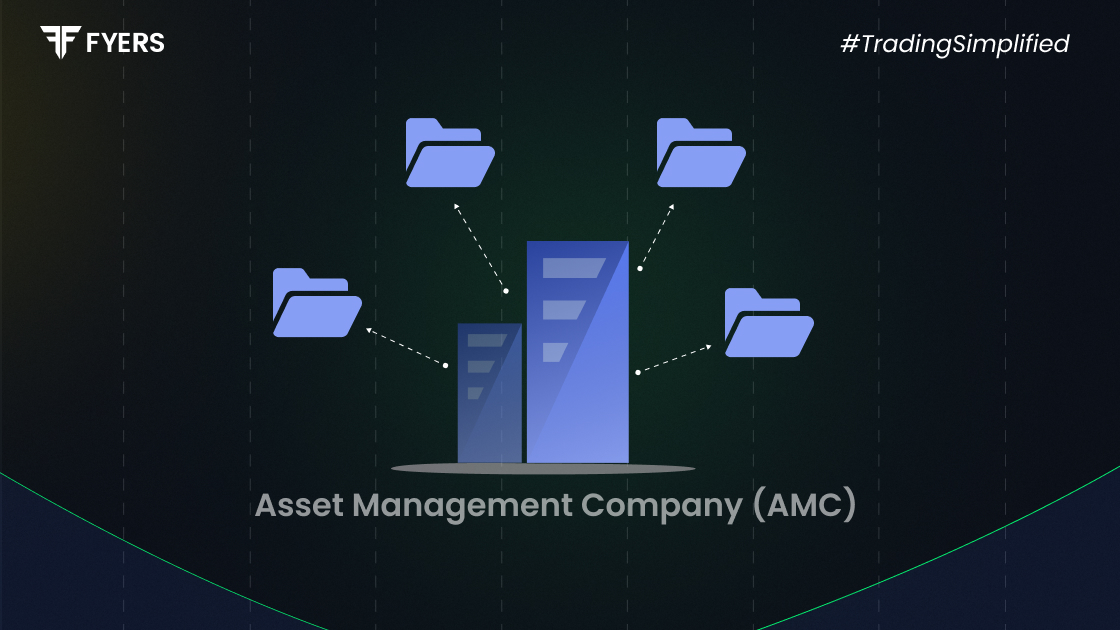

 31 Jul, 2025
31 Jul, 2025
 4 mins read
4 mins read

Managing your investments can be complex, especially when juggling different asset classes. That’s where Asset Management Companies (AMCs) come in. These institutions handle investments on your behalf, aiming to maximise returns based on your financial goals and risk appetite. This blog explores what AMCs are, how they function, their organisational setup, and why investing through one could benefit you.
An Asset Management Company (AMC) is a financial institution that manages investments pooled from individual and institutional investors. These investments are channelled into securities like equities, bonds, real estate, and mutual funds. The goal is to grow the collective portfolio based on pre-defined investment objectives.
For example, mutual fund companies like HDFC Asset Management or SBI Mutual Fund act as AMCs. They design various funds tailored to different investor needs and risk profiles.
AMCs collect funds from investors and allocate them across a range of asset classes. Each fund is managed by a fund manager or a team of professionals with deep knowledge of financial markets. These managers conduct research, track market trends, and take investment decisions aligned with the fund's objective.
Investors purchase units of a fund managed by the AMC. The value of these units fluctuates with the performance of the underlying assets. AMCs charge a fee, typically a percentage of the assets under management (AUM), which compensates them for research, operations, and fund management.
AMCs play a multifaceted role in the financial ecosystem. Their primary functions include:
Fund creation and management: Designing mutual fund schemes across equity, debt, hybrid, and other categories.
Research and analysis: Conducting in-depth market studies to make informed investment decisions.
Portfolio diversification: Allocating investments to minimise risk while aiming for optimal returns.
Risk management: Applying strategies like hedging to protect investors against market volatility.
Compliance and reporting: Ensuring adherence to SEBI regulations and providing regular performance reports to investors.
AMCs are structured hierarchically to ensure efficient fund management and regulatory compliance. A typical AMC organisational chart includes:
Board of Directors: Offers strategic direction and oversees operations.
Chief Executive Officer (CEO): Leads the company and ensures execution of strategic plans.
Chief Investment Officer (CIO): Heads the investment team and supervises fund managers.
Fund Managers: Make day-to-day investment decisions.
Research Analysts: Provide data-driven insights for investment strategies.
Risk and Compliance Officers: Ensure adherence to risk protocols and regulatory standards.
This structure supports seamless collaboration across departments and ensures a strong internal control system.
AMCs offer a variety of funds catering to different investor needs. These include:
|
Fund Type |
Investment Focus |
Risk Level |
|---|---|---|
|
Equity Funds |
Stocks and equity-related instruments |
High |
|
Debt Funds |
Government and corporate bonds |
Low to Medium |
|
Hybrid Funds |
Mix of equity and debt instruments |
Medium |
|
Index Funds |
Mirror a market index like Nifty or Sensex |
Varies |
|
Liquid Funds |
Short-term money market instruments |
Low |
|
Thematic/Sectoral Funds |
Specific sectors like IT, Pharma, etc. |
High |
Each fund type is designed with a particular investment strategy and risk-return profile.
Investing through an AMC offers several advantages:
Professional management: Your money is handled by experienced fund managers.
Diversification: AMCs spread your investments across multiple assets to reduce risk.
Accessibility: AMCs offer entry to complex markets through simple mutual fund units.
Regulatory oversight: SEBI regulations ensure transparency and investor protection.
Liquidity: Open-ended mutual funds allow easy entry and exit, providing financial flexibility.
Systematic investment options: SIPs (Systematic Investment Plans) make disciplined investing easy.
In India, AMCs are regulated by the Securities and Exchange Board of India (SEBI). SEBI lays down detailed guidelines covering:
Fund creation and categorisation
Disclosure norms
Risk management protocols
Pricing and valuation standards
Investor grievance redressal mechanisms
Each AMC must be registered with SEBI and operate under its strict regulatory framework. Additionally, AMCs must comply with regulations from the Association of Mutual Funds in India (AMFI), ensuring ethical conduct and industry best practices.
Asset Management Companies play a crucial role in shaping investment strategies for individuals and institutions alike. With expert fund managers, robust compliance systems, and a variety of fund options, AMCs offer a smart and accessible route to participate in the financial markets. Whether you're a beginner or a seasoned investor, leveraging an AMC can help you pursue your financial goals more efficiently.
AMCs collect money from multiple investors to create a mutual fund. A fund manager then invests this pooled money in different assets based on the fund's objective. The gains or losses are reflected in the Net Asset Value (NAV) of the fund. Investors own units of the fund, not the individual securities.
AMCs earn income through management fees, typically charged as a percentage of the assets under management (AUM). This fee is deducted from the fund's returns and covers operating costs, research, and salaries. Some AMCs may also earn money from advisory services.
Yes, AMCs in India are regulated by SEBI. SEBI ensures that AMCs follow strict disclosure, transparency, and risk management norms. They are also guided by AMFI's code of conduct, making them accountable and trustworthy for investors.
Calculate your Net P&L after deducting all the charges like Tax, Brokerage, etc.
Find your required margin.
Calculate the average price you paid for a stock and determine your total cost.
Estimate your investment growth. Calculate potential returns on one-time investments.
Forecast your investment returns. Understand potential growth with regular contributions.